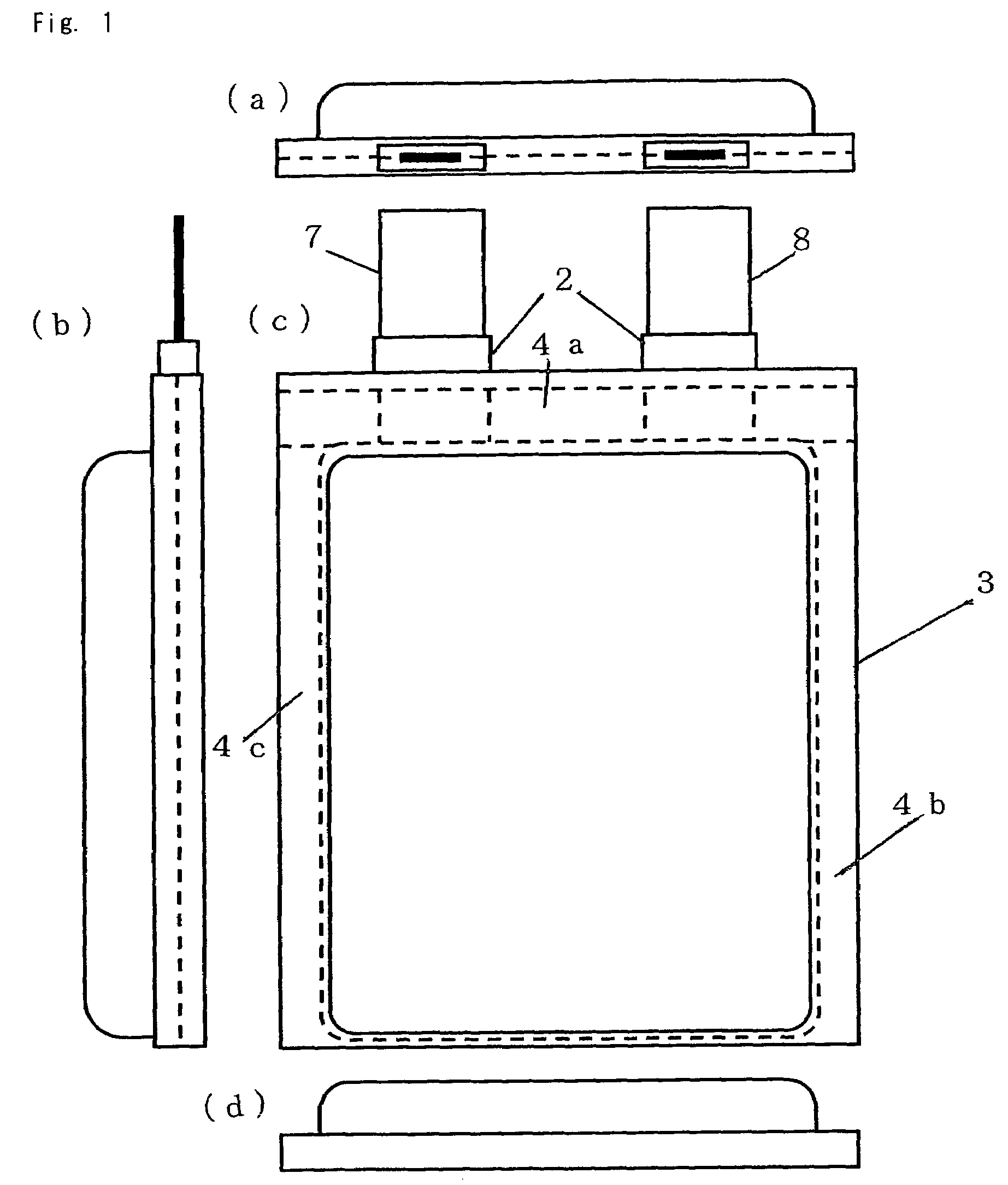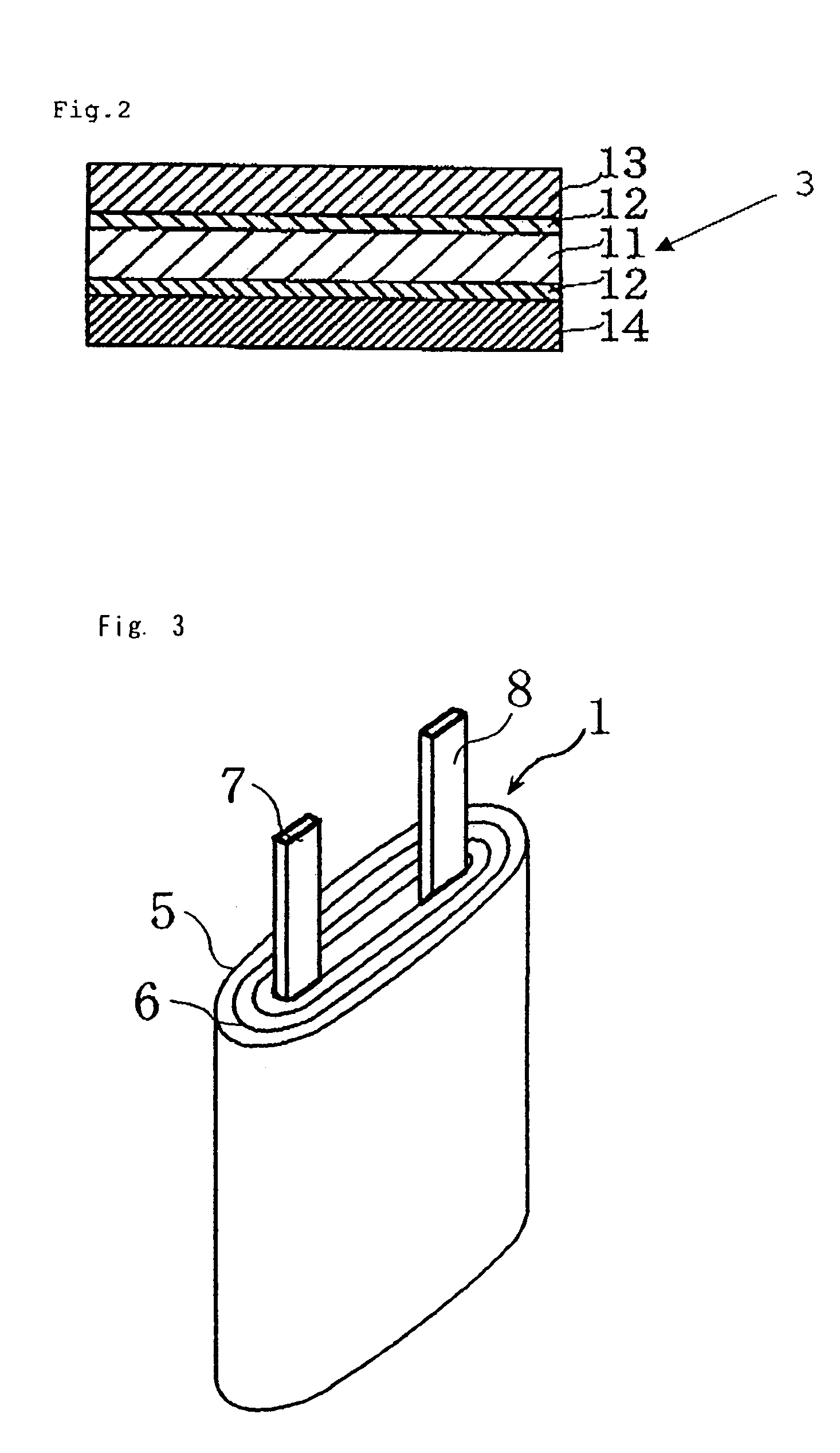Nonaqueous electrolyte cell with improved high temperature characteristics
a non-aqueous electrolyte, high temperature technology, applied in the direction of non-aqueous electrolyte cells, cell components, electrochemical generators, etc., can solve the problems of degrading contactivity, affecting the cell cycle characteristics, and generating gas, so as to inhibit the uneven reaction of the cell, uniform polymer electrolyte, and less phase separation
- Summary
- Abstract
- Description
- Claims
- Application Information
AI Technical Summary
Benefits of technology
Problems solved by technology
Method used
Image
Examples
examples 1 to 17
, COMPARATIVE EXAMPLES 1 TO 9
[0052]As shown in Tables 1 and 2, cells were prepared in the same manner as that described above except for changes in the positive electrode active material, the prepolymer, its composition ratio, the added amount of the vinylene carbonate, the cyclic acid anhydride, and its amount.
[0053]With the use of the cells of Examples 1 to 17 and Comparative Examples 1 to 9, the high-temperature (70° C.) cycle characteristics were measured. The results are listed in Tables 1 and 2.
[0054]High-Temperature Cycle Characteristics Tests[0055]1. Charge at 1 I t (500 mA) to 4.2 V, and then at 4.2 V for 3 hrs. in total.[0056]2. 10 minutes' intermission.[0057]3. Discharge at 1 I t (500 mA) to 2.75 V[0058]4. 10 minutes' intermission. Then back to 1.
[0059]High-temperature cycle characteristics (%): (500-cycle discharge capacity÷1-cycle discharge capacity)×100
[0060]
TABLE 1PositiveCyclic acidelectrodePolyester-basedPolyether-anhydrideHigh-temp.activemonomerbasedVCAmountcharact...
PUM
| Property | Measurement | Unit |
|---|---|---|
| thick | aaaaa | aaaaa |
| thick | aaaaa | aaaaa |
| thick | aaaaa | aaaaa |
Abstract
Description
Claims
Application Information
 Login to View More
Login to View More - R&D
- Intellectual Property
- Life Sciences
- Materials
- Tech Scout
- Unparalleled Data Quality
- Higher Quality Content
- 60% Fewer Hallucinations
Browse by: Latest US Patents, China's latest patents, Technical Efficacy Thesaurus, Application Domain, Technology Topic, Popular Technical Reports.
© 2025 PatSnap. All rights reserved.Legal|Privacy policy|Modern Slavery Act Transparency Statement|Sitemap|About US| Contact US: help@patsnap.com



